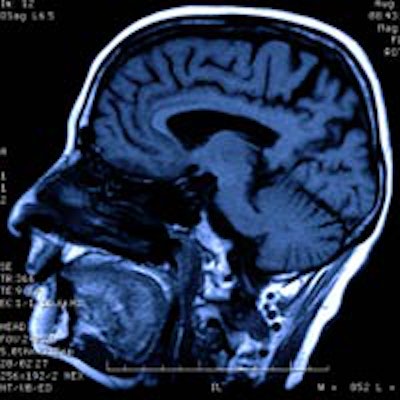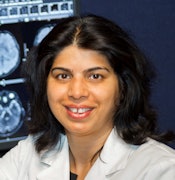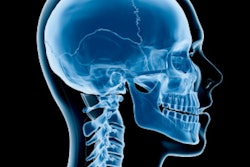
Patient factors such as race and sex influence the use of neuroimaging for stroke, according to research presented at the American Society of Neuroradiology annual meeting (ASNR 2016) in Washington, DC. Yet exactly how these factors influence neuroimaging utilization and how they might affect clinical practice remain unclear.
Studies on healthcare disparities have often shown that minority patients or those lower on the income scale don't receive the care they need. However, presenter Dr. Achala Vagal from the University of Cincinnati and colleagues actually found the opposite.
 Dr. Achala Vagal from the University of Cincinnati.
Dr. Achala Vagal from the University of Cincinnati."We found differences in neuroimaging use, but not the ones we expected," she told AuntMinnie.com. "For example, in our cohort, blacks actually underwent more CT angiography, MR, and MR angiography exams for stroke than whites did. We also found that there were no differences in utilization when it came to insurance or socioeconomic status."
Dealing with disparities
Vagal's group used data from the Greater Cincinnati/Northern Kentucky Stroke Study, which is funded by the U.S. National Institutes of Health (NIH). The data included charts and imaging records from stroke patients treated in 2005 and 2010, and consisted of cases from hospitals, clinics, coroners, nursing homes, and physician offices from a five-county region. The region is representative of the U.S. for age, percentage of African-American residents, median income, and educational level, Vagal said.
The researchers calculated the proportion of imaging use within two days of stroke onset or hospital admission date, specifically head CT without contrast, head MR, CT angiogram, MR angiogram, digital subtraction angiogram, and carotid ultrasound. They also calculated the odds of a patient undergoing advanced imaging, adjusting for insurance, the NIH stroke scale baseline, and hospital type (academic versus community).
In 2005, there were 3,471 stroke or ministroke (transient ischemic attack) events with imaging data available in 3,226 patients. In 2010, there were 3,431 events with imaging data in 3,213 patients, Vagal said.
Vagal and colleagues found the following:
- More men than women received MR and MR angiography in both years: 55% of men versus 51% of women for MR and 36% of men versus 31% of women for MR angiography (p < 0.01). There were no gender differences in the use of noncontrast head CT, CT angiography, or carotid ultrasound (although this result was not statistically significant).
- More blacks than whites underwent noncontrast CT, MR, and MR angiography: 96% of blacks versus 92% of whites for head CT without contrast, 59% of blacks versus 51% of whites for MR, and 41% of blacks versus 31% of whites for MR angiography (p < 0.01). There were no racial differences in the use of CT angiography (although this result was not statistically significant).
- The use of these imaging modalities -- except noncontrast head CT -- was higher in patients younger than 55 compared to those older than 55 (p < 0.01).
Upon further analysis, Vagal's group found that the odds of patients undergoing noncontrast head CT didn't differ significantly by age, sex, and race. However, the odds of receiving advanced neuroimaging (CT angiography, MR, MR angiography) was higher for African-American patients, those younger than 55, and those who came to an academic center or were seen by a stroke team/neurologist.
Healing healthcare differences
What do these findings suggest for addressing healthcare disparities? Epidemiological studies offer information about trends and practice patterns, but the data require more analysis, Vagal said. It's important to take into account factors such as how practice patterns by type of facility may differ or how stroke presents in different patient groups.
"Is there a 'center effect' or differential access to stroke expertise? Is part of the difference among blacks and whites due to variations in stroke risk factors?" she said. "These are just a few questions that need to be answered. Our study is a first step toward understanding the reasons for these neuroimaging use differences for stroke."




.fFmgij6Hin.png?auto=compress%2Cformat&fit=crop&h=100&q=70&w=100)




.fFmgij6Hin.png?auto=compress%2Cformat&fit=crop&h=167&q=70&w=250)











